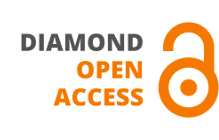Search results
Search for "ChIP-Seq" in Full Text gives 1 result(s) in Beilstein Journal of Organic Chemistry.
A systems-based framework to computationally describe putative transcription factors and signaling pathways regulating glycan biosynthesis
Beilstein J. Org. Chem. 2021, 17, 1712–1724, doi:10.3762/bjoc.17.119

- pathways is largely unknown. In this work, we performed data mining of TF–glycogene relationships from the Cistrome Cancer database (DB), which integrates chromatin immunoprecipitation sequencing (ChIP-Seq) and RNA-Seq data to constitute regulatory relationships. In total, we observed 22,654 potentially
- relationships, the starting point for experimental system-wide validation. Keywords: ChIP-Seq; glycoinformatics; glycosylation; TCGA transcription factor; Introduction The glycan signatures of cells and tissue are controlled by the expression pattern of 300–350 glycosylating-related genes that are together
- [12], and by the manual curation of various human glycogenes into pathways at GlycoEnzDB (https://virtualglycome.org/GlycoEnzDB, Figure 1B). Here, the Cistrome Cancer DB uses TF–gene binding data from previously published chromatin immunoprecipitation sequencing (ChIP-Seq) studies for various cell













